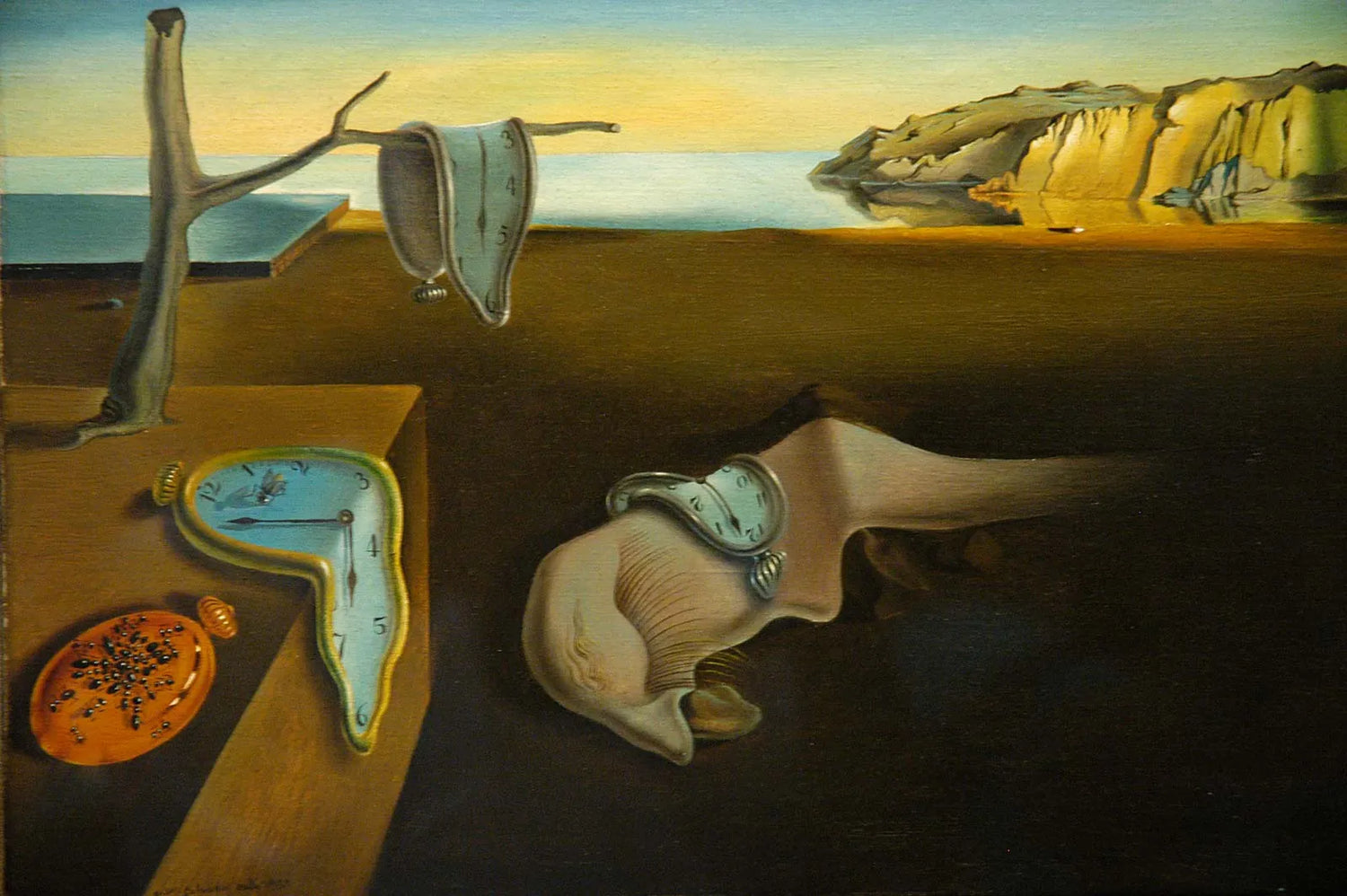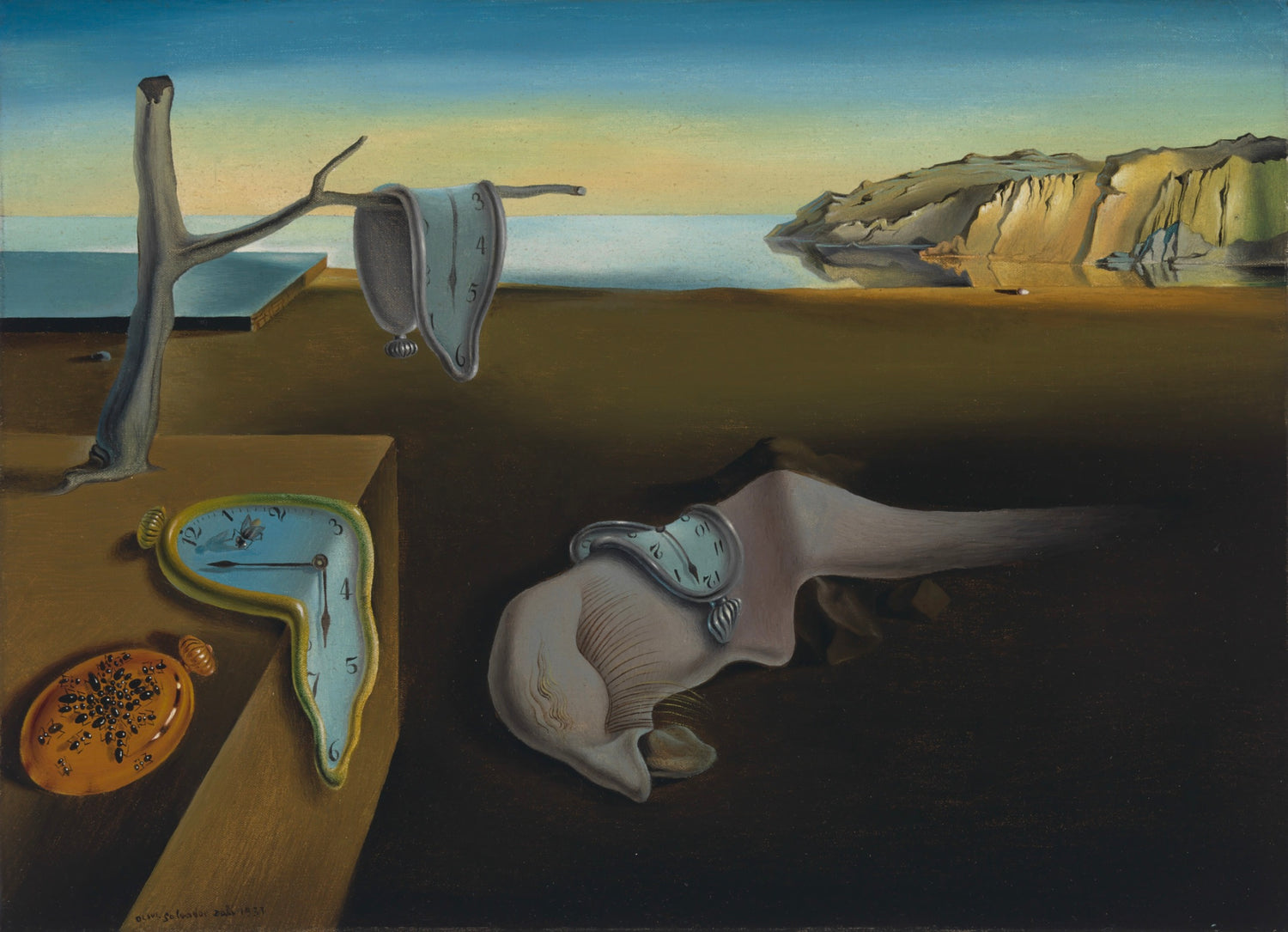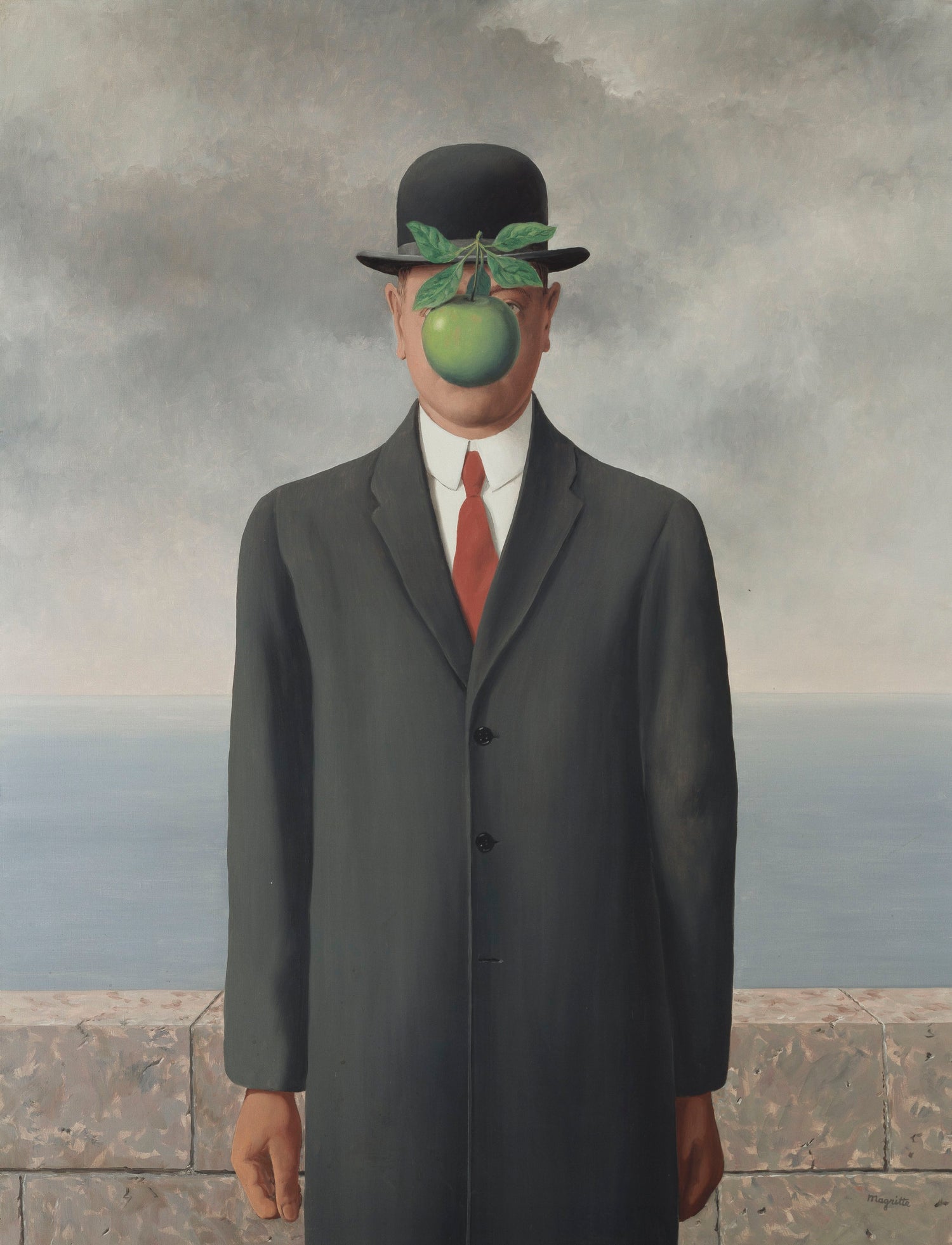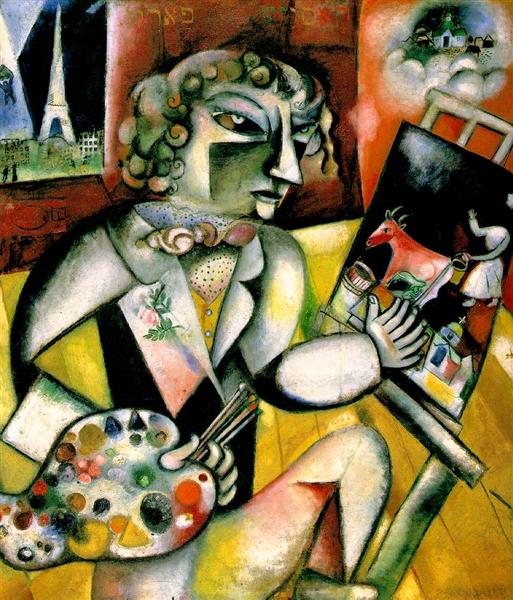
Surrealism
Era: 1924+
Surrealism is an artistic and literary movement founded by André Breton in 1924. This movement aims to free the mind from rational and logical constraints, exploring the world of dreams of the unconscious and the irrational.
Surrealist artists seek to transcend ordinary reality to reveal deeper and more mysterious truths. In painting, Surrealism manifests itself through dreamlike compositions, surprising juxtapositions and fantastic images. Salvador Dali, René Magritte and Max Ernst are the emblematic figures of the movement.
Dali, for example, with “The Persistence of Memory”, where soft watches blend into a strange landscape, defying the laws of logic and time. René Magritte uses familiar objects placed in unexpected contexts to provoke questioning and wonder, as in “La Trahison des Images” where a pipe is accompanied by the caption “Ceci n’est pas une Pipe”.
Surrealism is inspired by the psychoanalytic theories of Sigmund Freud, exploring the unconscious, dreams and fantasies. Techniques such as automatism, frottage and collage are commonly used to unleash creativity and access hidden dimensions of the mind.
In summary, Surrealism in painting is a quest for the invisible and the irrational, seeking to reveal the richness and complexity of the human unconscious through provocative and poetic images.
Remarkable Artwork

The Persistence of Memory
Salvador Dali
Year of creation: 1931
Estimated Market Value: Priceless
Original Format: 24 x 33 cm

The Son of Man
René Magritte
Year of creation: 1964
Estimated Market Value: Priceless
Original Format: 116 x 89 cm

